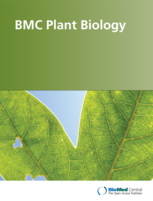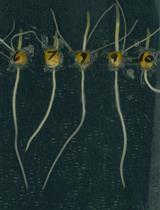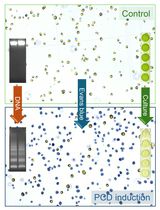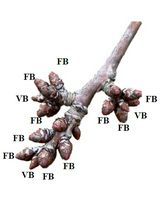- EN - English
- CN - 中文
Water Deficit Treatment and Measurement in Apple Trees
苹果树的水分亏损处理和测量
发布: 2015年02月05日第5卷第3期 DOI: 10.21769/BioProtoc.1388 浏览次数: 10024
评审: Arsalan DaudiYuko KuritaYurong Xie
Abstract
Water is considered perhaps the most limiting factor for plant growth and productivity (Boyer, 1982), and climate change predicts more frequent, more severe and longer drought periods for a significant portion of the world in coming years. Unfortunately, drought resistance is particularly difficult to measure due in part to the complexity of the underlying biology that contributes to a plant’s ability to cope with water limitations. For example, water deficit is frequently examined by detaching leaves or withholding water for a set period of time prior to tissue collection. Such approaches may elucidate the early stages of drought response but are generally not physiologically relevant for maintenance of drought resistance over a longer period. A more realistic approach is to impose a gradual water limitation with a sustained soil moisture level, particularly in the case of woody perennials. We describe here a protocol that imposes a long-term water deficit under controlled laboratory conditions that allow a molecular biology approach to understanding how woody plants survive severe water limitations. Representative data can be found in Artlip et al. (1997) and Bassett et al. (2014).
Keywords: Malus x domestica (苹果)Materials and Reagents
- Woody plants (seedlings, grafted, or own-rooted)
- Potting soil (MetroMix 360; SunGro Horticulture)
- Water source for watering plants
- ‘Play’ sand (can be obtained from any ‘home and garden’ store) washed three times with hot tap water and dried
- Slow release fertilizer (Osmocote, Scott’s Miracle-Gro Products, catalog number: 19-6-12 N-P-K )
- MS salts (Phytotechnology Laboratories, catalog number: M524 )
- Sucrose (Phytotechnology Laboratories, catalog number: S391 )
- Agar (Fisher Scientific, catalog number: BP1423 )
- Myo-inositol (Sigma-Aldritch, catalog number: I3011 )
- IBA (Sigma-Aldritch, catalog number: I5386 )
- Nutrient solution (MiracleGro, Scott’s Miracle-Gro Products, catalog number: 24-8-16 N-P-K )
- Rooting medium (see Recipes)
Equipment
- 1 gallon plastic pots (or desired size to accommodate plants)
- Plastic beaker for measuring soil
- Aluminum foil (optional)
- Small ruler
- Oasis rooting cubes (Smithers-Oasis LC-1 Horticubes, catalog number: 5240 )
- Conviron TC16 tissue culture chamber (Conviron)
- Greenhouse or Growth chamber for maintaining appropriate light, temperature and photoperiod (equivalent to Conviron, models: PGV36 or PGW36 )
- Scale appropriate for weighing pots with plants, (e.g. Weigh-Tronix, model: 830 )
- Scholander pressure bomb (SoilMoisture Equipment Corp., model: 3005 Series )
Procedure
文章信息
版权信息
© 2015 The Authors; exclusive licensee Bio-protocol LLC.
如何引用
Bassett, C. L., Artlip, T. S. and Wisniewski, M. E. (2015). Water Deficit Treatment and Measurement in Apple Trees. Bio-protocol 5(3): e1388. DOI: 10.21769/BioProtoc.1388.
分类
植物科学 > 植物生理学 > 非生物胁迫
植物科学 > 植物生理学 > 植物生长
您对这篇实验方法有问题吗?
在此处发布您的问题,我们将邀请本文作者来回答。同时,我们会将您的问题发布到Bio-protocol Exchange,以便寻求社区成员的帮助。
Share
Bluesky
X
Copy link













